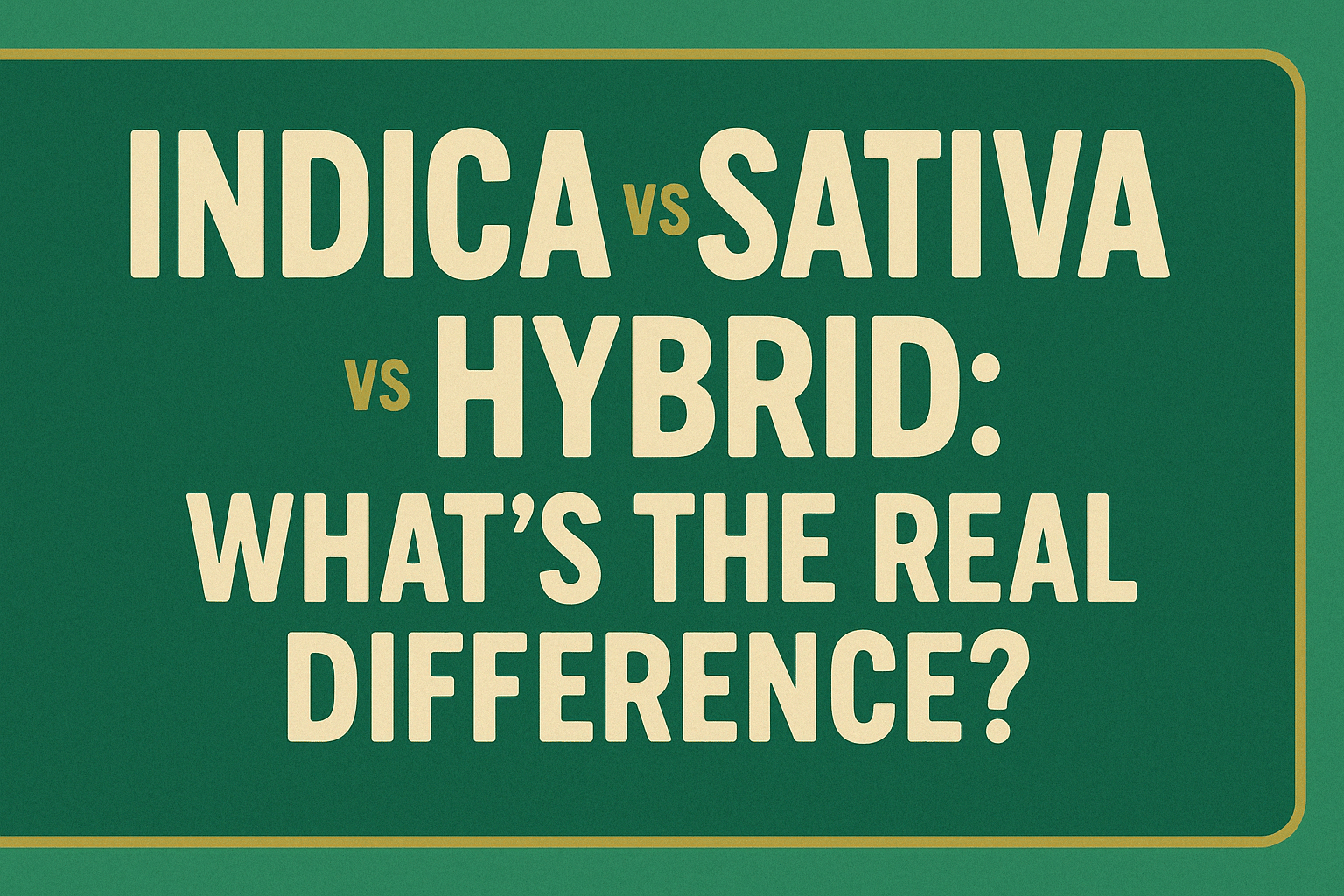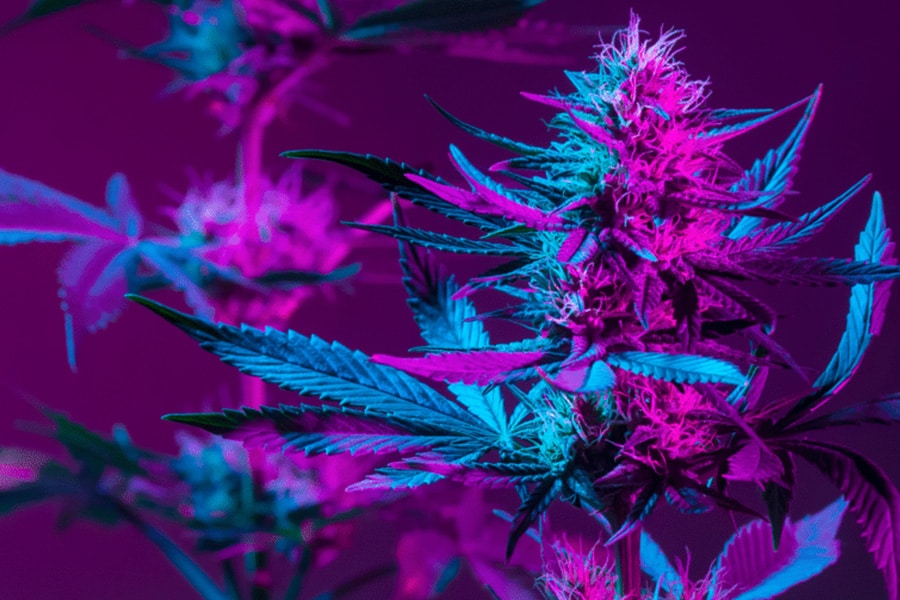
For years, cannabis has been divided into three main categories: indica, sativa, and hybrid. Walk into a dispensary and you’ll likely hear these terms tossed around like gospel, as if each guarantees a certain effect. Indicas are often said to relax the body, sativas to energize the mind, and hybrids to offer a bit of both. But is it really that simple?
Let’s unpack the truth behind these labels, how they originated, and why choosing the right cannabis product goes way beyond just picking “indica” or “sativa.”
Where the Indica and Sativa Labels Come From
The terms indica and sativa originally referred to the botanical appearance of cannabis plants, not their effects.
- Cannabis sativa plants were first classified in the 18th century. These plants were tall, thin, and native to regions like South America and Southeast Asia.
- Cannabis indica, classified later, described shorter, bushier plants from harsher climates like the Middle East, India, and Afghanistan.
These physical characteristics had everything to do with geography and survival—nothing to do with the kind of high you’d experience.
Over time, as cannabis was crossbred around the globe, those physical distinctions began to blur. Today, most strains are hybrids, the product of years of genetic mixing.
Commonly Believed Effects of Indica vs. Sativa
Even though most strains today are genetically hybrids, many dispensaries still describe effects along traditional lines:
Indica-dominant strains are often described as:
- Calming
- Body-heavy or “couch-lock”
- Good for evening use or sleep
- Helpful for chronic pain, anxiety, and insomnia
Sativa-dominant strains are typically marketed as:
- Uplifting or cerebral
- Creativity-enhancing
- Best for daytime use
- May support mood, focus, or social interaction
Hybrid strains are said to combine the best of both worlds:
- Balanced mind/body effects
- Effects can lean more toward either indica or sativa
- Great for general use or new users
But here's the kicker: this breakdown is not scientifically accurate.
Science Says: It’s All About Terpenes and Cannabinoids
Today, cannabis scientists and experts agree that the terms indica, sativa, and hybrid are poor predictors of actual effects. Two indicas can produce completely different experiences, depending on their cannabinoid and terpene profiles.
Let’s break down the real variables that matter:
1. Cannabinoids (THC, CBD, etc.)
These are the active compounds that interact with your body’s endocannabinoid system. The most famous ones are:
- THC (Tetrahydrocannabinol): Causes the “high,” enhances mood, reduces pain, stimulates appetite.
- CBD (Cannabidiol): Non-intoxicating; helps with anxiety, pain, inflammation, and seizures.
- CBN, CBG, CBC: Emerging minor cannabinoids with potential therapeutic effects.
Your experience will largely depend on the ratio of THC to CBD and which minor cannabinoids are present.
2. Terpenes
These are aromatic compounds found in many plants, including cannabis. They influence both flavor and effects.
Some key cannabis terpenes include:
- Myrcene: Sedating and relaxing (commonly found in "indica" strains)
- Limonene: Uplifting, citrusy, may improve mood
- Linalool: Calming, floral, known for anti-anxiety potential
- Caryophyllene: Spicy, anti-inflammatory, may reduce stress
- Pinene: Sharp and piney, may improve alertness and memory
The entourage effect—how cannabinoids and terpenes interact—determines how a particular strain makes you feel, not whether it’s labeled “indica” or “sativa.”
How to Actually Choose the Right Strain for You
So if indica/sativa isn’t reliable, how should you choose cannabis?
Here are some better ways to pick a product that matches your needs:
1. Know Your Desired Outcome
Are you looking to relax, focus, sleep better, or feel more social? Start by identifying what you're hoping to feel—or not feel.
2. Look at the THC and CBD Content
- Higher THC strains can be more intense or euphoric.
- Balanced THC/CBD strains offer milder effects.
- High-CBD, low-THC strains may help with stress or pain without feeling “high.”
3. Pay Attention to Terpene Profiles
If you find a strain that works well for you, note the terpenes in it. These often provide more consistency across different products and brands.
4. Talk to Your Budtender
A knowledgeable budtender can guide you to products based on lab-tested profiles, not outdated categories. Ask about terpene content and test results.
5. Experiment and Journal
Track your experiences. Write down the strain name, THC/CBD %, terpene content, and how it made you feel. You’ll start to see patterns.
Examples of Strain Effects Beyond Labels
- Durban Poison – Often called a sativa, but the real effects are thanks to its high THCV content, which may suppress appetite and boost energy.
- Granddaddy Purple – A classic “indica” but its sleepy effects come from myrcene, linalool, and a high THC content.
- Harlequin – A high-CBD “sativa” that provides pain relief and calmness without much intoxication.
In each case, it’s not about the name—it’s about chemistry.
What Are Hybrids and Why Are Most Strains Hybrids Now?
Nearly all cannabis strains today are hybrids. Growers have spent decades crossing genetics to create plants that:
- Grow faster
- Yield more
- Resist disease
- Have tailored THC/CBD levels
- Deliver specific effects (like euphoria without drowsiness)
As a result, “pure” indicas or sativas are extremely rare. Instead, you’ll see terms like sativa-dominant hybrid or indica-leaning hybrid, which gives a rough idea of the plant’s heritage—but not a guarantee of its effects.
So… Should We Stop Using Indica and Sativa Altogether?
Not necessarily. These labels are still helpful to quickly narrow down options, especially in a busy dispensary setting. Many customers are familiar with the traditional meanings, and it offers a starting point for conversations.
That said, we recommend using indica/sativa/hybrid more like a flavor category, not a promise of effects. Think of it like wine—Cabernet and Pinot Noir give you some hints about what you’re getting, but the experience still depends on the specific bottle.
Final Thoughts: Finding Your Best Fit
Cannabis is deeply personal. What makes one person feel calm might make another feel anxious. The key is learning how your body reacts and what chemical profiles give you the results you want.
Indica, sativa, and hybrid are useful—but incomplete—shorthand. As you shop, go deeper: look at lab results, learn about terpenes, and track your reactions.
And if you’re not sure where to start, stop by Clear Choice Cannabis. Our friendly, educated team will guide you toward strains and products based on real science, not just labels. Browse our Tacoma cannabis menu or Bremerton cannabis menu.

